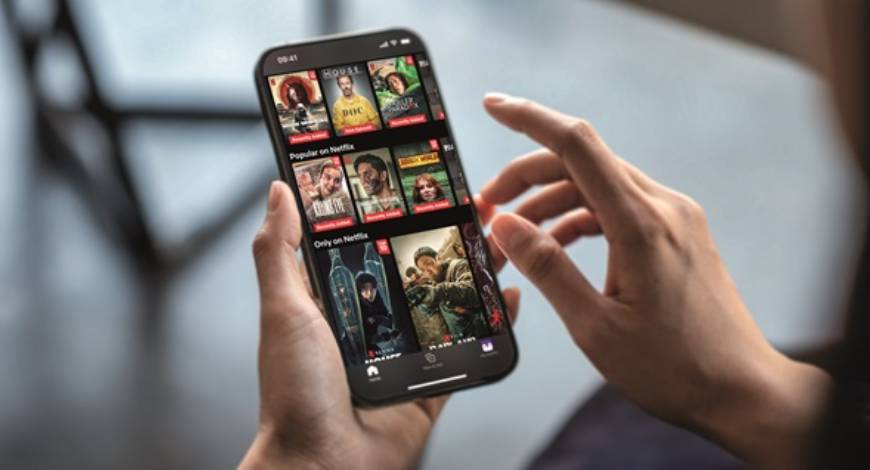Trends
Broadcast 2.0 : A call to action for the digital age

Adapting to over-the-top and IP-based services is no longer optional but essential for broadcasters, if they want to remain relevant in this new age.
Ask yourself: when did you last observe teenagers in your household grab the remote control and browse the Electronic Programme Guide (EPG) to select a channel on satellite or cable TV, instead of just watching it straight from their tablet or smartphone?
The generation gap is massive. The age-old model of linear TV that was once the back-bone of our media consumption is fading into obsolescence. The shift toward streaming services, compounded by changes in consumer behaviour, is significantly disrupting the broadcast industry.
In the US, cable television has become a battleground of the underdogs, where the winner is the service that loses the fewest subscribers each quarter and powerhouses like Comcast find themselves in a fierce battle against competitors such as Charter Communications. It’s a market where, according to Ampere Analysis, 18- to 24-year-old adults consume 94% of their videos on-demand and only 6% on linear TV. No wonder Disney is contemplating divesting parts of ESPN to fund its transition to streaming services.
In Europe, things are no better. ARTE channel dreams of itself as a future European Netflix, while the RTL Group is prioritising scaling up its subscriber base to appeal to brands and advertisers with its TV Now and Videoland services. In the meantime, traditional broadcast advertising revenues are dropping rapidly and FAST channels are still trying to figure out a path to profitability.
In our MENA markets, the writing is on the wall: 60% of the population is under 30 and the median age is 27, eleven years younger than in the US and 17 younger than in Europe. The cost of mobile broadband subscriptions may remain excessive by international standards, but Wi-Fi hotspots are plentiful. Younger generations are already on the move and ‘cable-cutting’ from a cable many have never had.
This shift signifies more than a change in viewer preference – it heralds a revolution in how content is produced, distributed and consumed, and how advertising is served within this new digital landscape. Brands are eagerly pursuing digital audiences, enticed by the precision and measurable engagement of online advertising platforms that they have become used to these past two decades.
Adapting to over-the-top (OTT) and IP-based services is no longer optional but essential for broadcasters, especially those publicly funded. To remain relevant, they must reach consumers, subjects and citizens where they consume content. Such an adaptation demands a radical overhaul of legacy OTT platforms, transforming them from secondary considerations to the forefront of broadcasters’ strategy. These platforms must be enhanced to support advanced, data-driven customer engagement mechanisms critical to retaining consumer attention and generating the revenue necessary to produce genuine, captivating content.
To be relevant, next-generation Broadcast 2.0 OTT platforms must plug into the existing content management systems that drive modern broadcast operations. Legacy archives, daily produced media assets and their associated metadata sets must stay addressable and accessible to distribution systems. Automated workflow engines are required to streamline distribution in a multi-platform world where media asset footprint (MAF) across OTT and social networks has become key to consumer attention and associated revenues, be these advertising- or subscription-based.
As we navigate this brutal transition, the industry is tasked with comprehensively updating its digital infrastructure. This evolution requires more than just technological innovation. It necessitates a complete re-evaluation of how content is produced, managed, delivered and monetised. Broadcasters must implement solid data strategies to drive these next-generation content distribution platforms. Developing new target operating models (TOM) is no easy task. It is the art of digital transformers and requires the buy-in of all stakeholders to determine what capability gaps remain. Broadcasters also have to focus on creating platforms driven by editorial integrity, leveraging AI-driven content curation and using data analytics to customise campaigns according to viewer preferences and behaviours, to meet the requirements of contemporary digital advertising marketplaces.
The underlying principles are clear: consumer data is an invaluable asset in the digital age, too precious to be monopolised by global tech behemoths like Google, Facebook and Netflix. To reclaim and maintain consumer trust, broadcasters must concentrate on delivering content that truly resonates with their audience, coupled with advertising that is both relevant and valuable. Programming needs to engage viewers by addressing their interests or connecting with them, ensuring it captures and retains their attention.
In addition, schedulers must milk content release windows across the TVOD (transactional video on demand), SVOD (subscription video on demand), AVOD (advertising-supported video on demand) and FAST (free ad-supported streaming television) continuum. Moreover, they need to do their best to guarantee a return on investment on the long tail of their catalogues.
Similarly, advertising must be pertinent and add value to the consumer experience. As with web advertising a decade ago, a tailored approach is critical to satisfying the demands of brands and advertisers that require concrete, quantifiable engagement with their target audiences.
The future of broadcasting lies in the strategic implementation of hyper-personalisation in both content and advertising. Customising the media and marketing messages to align with individual preferences and behaviours will create a mutually beneficial scenario for both brands and consumers. This strategy not only enhances viewer satisfaction but also unveils new avenues for revenue, laying a solid groundwork for the transition to Broadcast 2.0.
The evolution of linear TV to a new digital-centric model is unavoidable and necessary. As the broadcasting sector evolves, leveraging cutting-edge technology and data analytics will be pivotal in delivering a more personalised, engaging and effective viewer experience. This shift is a significant challenge and an extraordinary opportunity to redefine the essence of broadcasting for the new digital era. BroadcastProME





